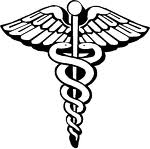Water is a key resource for our quality of life, things that grow and manufacture. It also provides systems and ecological habitat in Europe, plants and animals.
Access to safe water for drinking and sanitation is a prerequisite for health and well-being. Most people in Europe with access to drinking water quality. However, in some parts of the quality is still often do not meet basic biological and chemical agents. Fresh, clean water is also essential for ecosystems. Plants and animals in lakes, rivers and seas to respond to environmental changes caused by chemical changes in water quality and physical disturbance of habitats. Changes in species composition of groups of organisms such as phytoplankton, algae, macrophytes, animals and fish can be caused by climate change. They may also indicate changes in water quality due to eutrophication, organic pollution, hazardous substances or oil. Changes in habitat can cause physical disturbance through dams, drainage and dredging of rivers, construction of reservoirs, sand and gravel in the coastal waters, bottom trawling by fishing vessels, etc.
Almost all human actions can have negative effects and water. Water quality affects both the direct and diffuse pollution from point sources that come from rural and urban, industrial emissions and agriculture. pollution from agriculture and point source pollution from sewage wastewater and industrial discharges are the main sources. In agriculture, the main pollutants are nutrients, pesticides, sediment and faecal micro-organisms. Oxygen consumption of substances and hazardous chemicals are linked to discharges from point sources.
The graph shows the many sources of nitrogen pollution in water. In general, you can make a distinction between:
sources such as discharges from sewage wastewater, industrial and agricultural products;
sources, such as losses in the background (eg, forests), agricultural losses, losses from scattered dwellings and atmospheric deposition on water bodies (eg marine areas, or lakes).
Access to safe water for drinking and sanitation is a prerequisite for health and well-being. Most people in Europe with access to drinking water quality. However, in some parts of the quality is still often do not meet basic biological and chemical agents. Fresh, clean water is also essential for ecosystems. Plants and animals in lakes, rivers and seas to respond to environmental changes caused by chemical changes in water quality and physical disturbance of habitats. Changes in species composition of groups of organisms such as phytoplankton, algae, macrophytes, animals and fish can be caused by climate change. They may also indicate changes in water quality due to eutrophication, organic pollution, hazardous substances or oil. Changes in habitat can cause physical disturbance through dams, drainage and dredging of rivers, construction of reservoirs, sand and gravel in the coastal waters, bottom trawling by fishing vessels, etc.
Almost all human actions can have negative effects and water. Water quality affects both the direct and diffuse pollution from point sources that come from rural and urban, industrial emissions and agriculture. pollution from agriculture and point source pollution from sewage wastewater and industrial discharges are the main sources. In agriculture, the main pollutants are nutrients, pesticides, sediment and faecal micro-organisms. Oxygen consumption of substances and hazardous chemicals are linked to discharges from point sources.
The graph shows the many sources of nitrogen pollution in water. In general, you can make a distinction between:
sources such as discharges from sewage wastewater, industrial and agricultural products;
sources, such as losses in the background (eg, forests), agricultural losses, losses from scattered dwellings and atmospheric deposition on water bodies (eg marine areas, or lakes).

via eea.europa

No comments:
Post a Comment